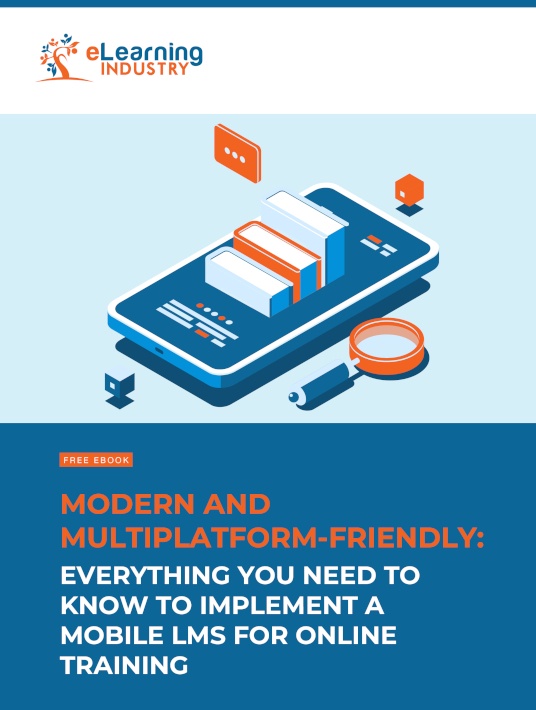Considering A Mobile LMS For JIT Performance Support: 6 Reasons Why Your SMB Needs It
SMBs usually don’t have extravagant L&D budgets. Nor do they employ a massive workforce that warrants a costly LMS that can accommodate hundreds of users. But that doesn’t mean they can reap any less reward from a mobile-friendly system. In fact, a mobile LMS can give your small to mid-sized business the opportunity to provide moment-of-need online training resources to your entire team; whether they’re based in the office or jet-setting around the globe to pitch your products. Here are 6 reasons why your SMB needs a mobile LMS for JIT performance support.

1. Reliable Feedback
JIT tools are generally offered as an archive. It could be a library of infographic summaries or a stash of how-to clips in audio/ video format. Employees can download them at will, and your LMS analytics will show you who used what, when and why. What you can’t be sure of is whether the module was effective. Feedback options in your mobile LMS can bridge this gap. After the resource has been accessed, you can notify the corporate learner. Offer them a quick interaction to tell you how useful the unit was. Make it simple: ‘Was this useful? Yes/No’. After all, in a JIT situation, they don’t have time for a detailed response. The more involving it is, the less likely it is they’ll answer briefly, cutting you off from valuable training intel.
2. Scope For Follow-Up
Later, when they have some breathing space, you can pursue the matter. Mobile does this better than any other channel. How? GPS can show you when they’re back in the office or seem more relaxed. You can push a notification to remind them to respond. Keep it convenient. ‘Is this a good time for a feedback session?’ If not, allow them to postpone. You can also tell them how long the follow-up process will take; ideally less than a minute. You just want to know if the JIT module met their needs, why (or why not) and how to improve it. This process is far easier on mobile because they already do it for their games and personal apps. It’s a natural, intuitive and non-intrusive method that’s not easily replicated on a desktop.
3. Quick Testing
Your organization’s mobile LMS isn’t an individual training tool. It’s a platform used for multiple functions, including L&D. This means you sometimes have a whole new course ready to go. Other times, you have a simple activity or feature you’ve just upgraded. You may want to assess its efficacy or popularity in short. Or you may simply want to notify employees that there’s a new JIT training tool available and examine how it addresses a common pain point. Doing this via desktop would involve waiting for your staff to report to work or hiving off time from their busy workday. Via mobile, you have the option to text them and say, ‘Hey, here’s a new feature. Please take two minutes to explore it on your own.’ It doesn’t have to be a structured process and it allows for real-time testing and tweaking of your online training materials.
4. Data Tracking
Every LMS worth its salt has detailed analytics. But by adding a mobile LMS component, your metrics are even richer. You can gather all sorts of location-based data. This includes internet reach, mobile signal strength, and physical customer segmentation. You can estimate transport and accommodation requirements and training preferences (time, place, duration). You can measure response times and enable automated updates, both for content and features. You can also explore synchronization tactics. These are all advantages that aren’t quite there when you restrict yourself to desktop LMS.
5. Retains Top Talent
Employees need JIT support to get the job done and improve performance behaviors. If you give them the online training resources they require, they’re more likely to stay with you and continue to develop their skills. This saves you the expense of having to hire and train their replacements; who, in turn, will eventually follow the lead of their predecessors because they aren’t getting the ongoing support they need. It’s a vicious cycle which you have the ability to break.
6. Reduces Compliance Risks
Employees can access mobile LMS JIT performance support tools to brush up on their compliance knowledge and mitigate risks. For example, it could be a quick tutorial on how to wear proper safety gear or decline a client bribe. As a result, they enhance their on-the-job performance and prevent costly violations. The secret is conducting pre-assessments to identify high-risk topics and then customizing your JIT library. For instance, many employees might still have an issue with the new company dress code. You’d then be able to develop demos and infographics to showcase the proper attire and help them avoid the most common mistakes.
Many businesses limit their capacity because they feel too small for tech. They stick with free tools and crowd-sourced features when customized systems are so much more beneficial. They’re not even necessarily that expensive. So why should your SMB look into mobile LMS as a way to offer support in JIT scenarios? Mobile is a better feedback tool. Instead of making assumptions, your employees can tell you in real time whether their JIT performance support tools worked. If not, they can elaborate on how. You can introduce new online training content and features on a consistent basis, developing a micro-cycle of beta testing. Mobile is also far better than desktop at providing targeted tracking and feedback but always applied with permission. Consent is key before you enable any form of corporate surveillance, regardless of your purpose.
What are the advantages of developing an eLearning app with a mobile LMS versus using a mobile-optimized one? Download our eBook Modern And Multiplatform-Friendly: Everything You Need To Know To Implement A Mobile LMS For Online Training to learn how a mobile LMS can help you deploy multiplatform-friendly training that’s accessible anywhere, anytime. It also features tips on how to stay on top of mobile learning trends before investing in a new LMS for SMB, as well as the implementation mistakes that can cause a costly catastrophe for your smaller organization.




